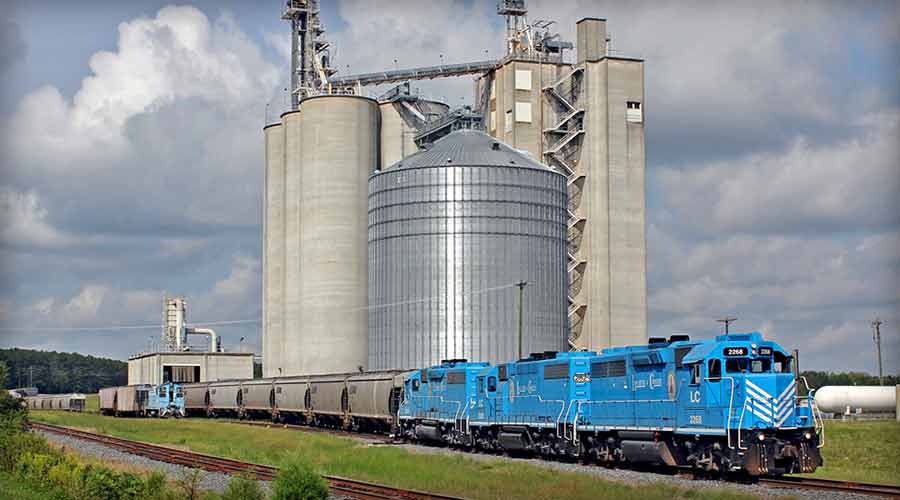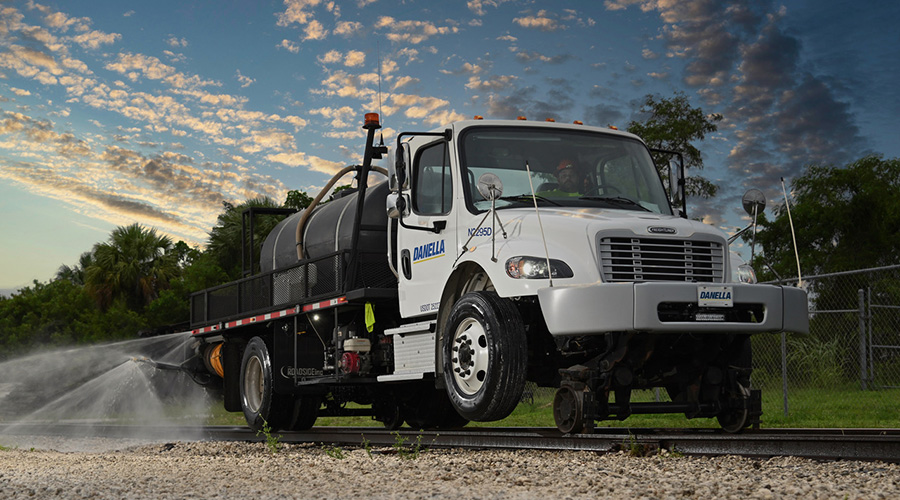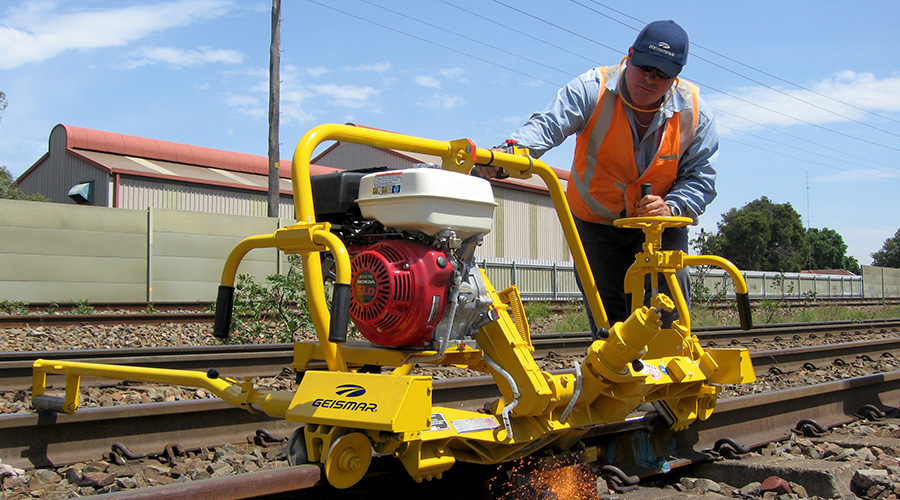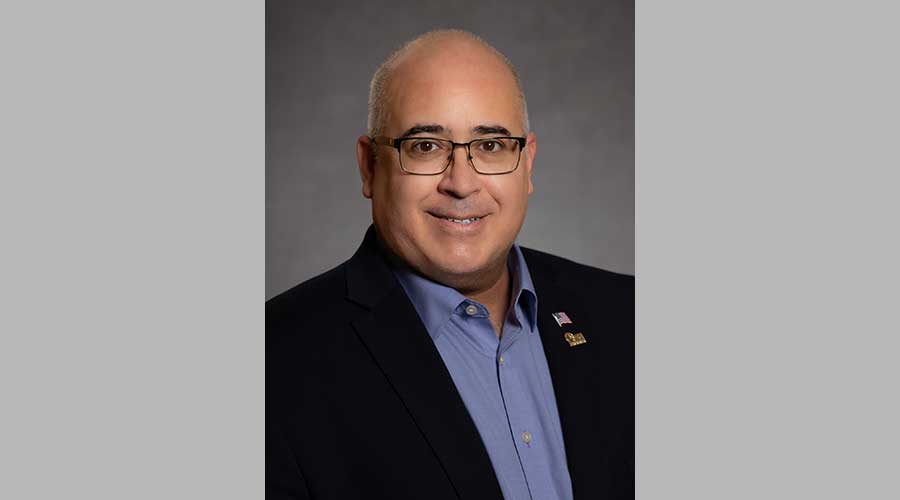Stay updated on news, articles and information for the rail industry
August 2008
Rail News: MOW
A tad more MOW work for railroads in ’08 means a bit more business for fastener suppliers
Through July, U.S. railroads continued to move more carloads but originate fewer intermodal loads vs. 2007 levels. Conversely, Canadian roads and Kansas City Southern de México S.A de C.V. posted intermodal volume gains and carload declines.
With North American freight railroads operating fewer trains than they did last year, maintenance-of-way (MOW) managers are taking advantage of a tad more track time to complete additional projects, including trackwork put off last year when traffic was heavier. They’re also taking advantage of a few more MOW dollars. For example, Norfolk Southern Railway recently increased this year’s capital expenditures by $80 million, in part to replace more rail.
That’s meant a bit more business for track fastener and fastening system suppliers. Freight railroads are trying to get track in good condition for when traffic levels go back up, says Robert Magnuson, president of fastener supplier AirBoss Railway Products Inc.
“Class Is have learned a lesson well — that now is the time to do routine maintenance when traffic is down,” he says.
Business also is up slightly for suppliers that serve the passenger-rail market. Escalating gasoline prices and mounting highway congestion in major cities are prompting more people to board trains. To accommodate increasing ridership, many passenger railroads are beginning to expand their systems and upgrade track to a state of good repair.
“We would expect there to be growing interest in the continued expansion of mass transit systems in North America,” said Advanced Track Products Inc. (ATP) officials in an email. “As such, ATP continues to develop its product line so that it can participate in more areas of the market.”
Fastener suppliers plan to keep extending their market reach, expanding product lines and stepping up deliveries to keep up with demand.
Pandrol USA L.P. currently is supplying PANDROL SAFELOK III fasteners to Union Pacific Railroad for up to 800,000 new concrete ties. The company also recently received an order for captive SAFELOK III fasteners from Kansas City Southern for up to 200,000 concrete ties as part of the Class I’s Meridian Speedway project. SAFELOK IIIs feature clips, pads and insulators pre-installed on concrete ties.
“We continue to see a trend toward the use of ‘captive’ fastenings for new track installations,” said Pandrol Vice President of Sales Dennis Wilcox in an email. “The advantages of having pads, insulators and clips pre-assembled on ties at the tie plant and arriving at the work site ready for installation are apparent to railroads, contractors and transit systems.”
CSX Transportation, NS and New Jersey Transit currently are placing orders for the PANDROL® VICTOR system. The wood-tie system features an AREMA tie plate to provide maximum bearing area, and PANDROL® resilient fasteners to
increase holding power and prevent rail rollover.
Tests conducted under 39-ton axle loads at the Association of American Railroads’ Transportation Technology Center Inc. (TTCI) in Pueblo, Colo., show a five-fold decrease in gage widening when using resilient fasteners on wood ties, Wilcox said.
An extended reach
In addition to filling orders, Pandrol introduced a new fastener to the freight-rail market this year. The PANDROL SAFELOK I long-reach clip extends one-half-inch further on the rail base and is designed to provide a slightly higher toe load. The longer-reach fastener ensures clip retention on high-degree curves where shoulder and insulator wear are most prevalent, Wilcox said.
Pandrol also introduced new insulator designs for the PANDROL® SAFELOK I system this year. The designs call for wide heel insulators that can be used with the company’s shoulder face repair shim to repair worn shoulders in track.
“This repair procedure renews tie life and eliminates the need for tie replacement,” Wilcox said.
ATP recently unveiled several fasteners, too. The company introduced the Trackmaster TM-24D and ACL-24 direct-fixation fasteners, which feature captive rail clips as an integral part of the fasteners’ bonded direct-fixation body.
ATP recently delivered 60,000 TM-24Ds to Dallas Area Rapid Transit (DART) and is in the process of delivering 30,000 ACL-24s to MTA Long Island Rail Road (LIRR).
DART is the first transit system to specify captive rail clips, according to ATP. A direct-fixation fastener with a captive rail clip eases and speeds installation, and eliminates the possibility of losing clips at job sites, the company said.
Captive audience
AirBoss also is filling orders to meet customer’s needs. The company recently completed delivery of rail clips to Rail Runner Express, which is operated by the Mid-Region Council of Governments and New Mexico Department of Transportation. The clips are designed for a captive tie system, says AirBoss’ Magnuson.
The company also recently began a third in-track test with a Class I for the AirBoss Captive Tie System, which features clips, pads and insulators pre assembled at a tie plant. AirBoss expects other railroads to begin testing the system by year’s end.
New business and R&D are hot topics at L.B. Foster Co., as well. The company recently won a contract from Miami-Dade Transit to supply 10,000 bonded direct-fixation fasteners. L.B. Foster outbid a non-bonded track fastener supplier, says Hakan Eksi, general manager of L.B. Foster’s Transit Products, adding that the fasteners will be delivered to the transit agency in three to four months.
During the past 18 months, the Chicago Transit Authority has adopted L.B. Foster’s style of direct-fixation fasteners as its standard fasteners, he says.
Currently, the company is developing a hot vulcanize bonded, elastomer-in-shear track fastener produced from special rubber for the transit-rail market. The high-resilient fastener will be ready for testing in August, says Eksi.
“It will be a softer fastener than standard designs,” he says. “It can be installed at critical locations near a hospital or school to reduce noise and vibration.”
L.B. Foster also is analyzing new pad designs that would be produced from materials other than rubber — such as polyurethane — to further reduce noise and vibration in track, says Korhan Ciloglu, manager of research and development, rail products.
First and foremost
R&D is a primary focus for Vossloh Fastening Systems America Corp., too. The company is developing a new version of its BT14 captive wood-tie fastening system to accommodate 6.6-inch base rail.
The system currently features a standard AREMA tie plate, resilient rail clip and two independent spring arms, and requires no rail anchors. The company expects to soon launch a test installation in Canada — Vossloh’s first freight-rail installation of the BT14 system, says VP of Sales John Stout.
Recently, Vossloh began a test installation of its W 14HH captive concrete-tie fastening system in Mexico. Designed as a fully insulated, three-element clipping system, the W 14HH features two independent spring arms that apply a consistent toe load, and offer track stability and anti-rollover protection. All fastening components — including two model SKL 14R tension clamps, one heavy-haul and one wear-resistant abrasion pad, and two reinforced angled guide plates — are pre-assembled on ties at a concrete-tie plant.
Earlier this year, BNSF Railway Co. announced plans to transition to the W 14HH system for concrete ties, representing Vossloh’s first major contract with a North American Class I, says Stout. The company is delivering units now and expects to complete deliveries at September’s end.
Vossloh also continues to test its concrete- and wood-tie fastening systems at TTCI. In May, the company launched a second series of tests sponsored by the AAR, says Stout.
Hooking up
At Lewis Bolt & Nut Co., a new version of a long-marketed bridge fastener is ready to transition from R&D to the sales-and-marketing phase.
The company plans to introduce a Sealtite hook bolt and installation system designed to be safer and easier to install from a bridge deck. Lewis Bolt & Nut has marketed Sealtite hook bolts since the early 1930s.
“The only way to install them was to lie on the treated deck and hook them underneath or use scaffolding or a boom truck,” says VP of Sales and Marketing Dave Barry. “Now, you can stand upright on the bridge deck and install them in about 90 seconds per hook bolt.”
The company also continues to work with Nordco Inc. to engineer the CX spiking machine to drive Lewis Bolt & Nut’s Double Head PermaGrip® spike. The fastener is designed to fit a three-quarter-inch square hole instead of a round hole and improve holding power.
Predominantly, short lines — such as the Ohio Central System — use the PermaGrip, says Barry.
Meanwhile, Class Is, regionals and transit-rail agencies continue to use Lewis Bolt & Nut’s EverGrip™ drive-in screw spike. Customers include Canadian Pacific Railway, the Dakota, Minnesota & Eastern Railroad Corp., KCS and LIRR. In addition, the Southern California Regional Rail Authority has ordered 80,000 units, says Barry.
The EverGrip can be installed up to three times faster than a traditional screw spike and is designed to prevent over-driving.
No backing off
United Steel and Fasteners Inc. (US&F) also is expanding and refining its product line. During the past year, the company began providing all-metal square lock nuts for installation on one- to one-and-three-quarters-inch frog bolts.
“It’s a secure fastener and won’t back off due to vibration,” says VP of Sales and Marketing Robert Fiorio.
US&F also currently supplies “G “ rail clips and PR601 elastic rail fastening systems that previously were single-sourced, and long-length spikes with round washer heads designed to hold tighter against tires and wheels at grade crossings, he says.
In addition, the company provides non-threaded knuckle, coupler and center pins for rail cars and locomotives, and fasteners for all bridges, including hook and bridge bolts, and malable washers.
“We keep blanks in stock now so we can cut a bolt to a desired length and provide a faster turnaround — three or four weeks instead of 10 weeks,” says Fiorio.
A broader marketing reach also is top of mind at Unit Rail Anchor Co. Inc. The company continues to market the concrete-tie ISOLATOR™
designed to fit securely against the tie bearing surface without abrasion and extend a tie’s service life. Introduced in early 2007, the ISOLATOR is a plastic “case” that surrounds all sections of the company’s Unit 5 rail anchor and can be cut to the same profile as a concrete tie, says Unit Rail Anchor General Manager Wes Hodges.
“Eventually, the anchor can wear into the tie and disrupt the electrical signal,” he says.
So far, the company has sold between 1.25 and 1.5 million units exclusively in North America. But there are international heavy-haul applications for the ISOLATOR, such as mining or moving coal, says Hodges.
Unit Rail Anchor also recently obtained an order in Liberia for more than 1 million Unit 5 rail anchors — the company’s first order in Africa, he says. Delivery was scheduled to be complete last month. The anchor is designed to reduce cribbing, eliminate potential contact/stress points, and be compatible with all automatic rail anchor machinery and tooling.
The cost of doing business
In terms of 2008 sales, volume has been on a par with 2007, says Hodges.
However, the supplier and its competitors are encountering a major obstacle to keeping up with production demands: extraordinarily high plastic and steel prices. During the past eight months, steel prices have shot up 80 percent, says Hodges.
“We’re in a constant search for new steel sources and cheaper chemistries,” he says. “We’re also trying to reduce the weight of anchors, but not reduce strength.”
Higher production costs notwithstanding, the fastener market’s potential appears promising, Pandrol’s Wilcox said in an email.
“We anticipate the strong market will hold for 2009 in spite of the significant price increases that we have seen in steel and plastic,” he said. 
Keywords
Browse articles on rail fastener rail fasteners rail fastening system maintenance of mayContact Progressive Railroading editorial staff.


 2025 MOW Spending Report: Passenger-rail programs
2025 MOW Spending Report: Passenger-rail programs
 Gardner steps down as Amtrak CEO
Gardner steps down as Amtrak CEO
 Guest comment: Oliver Wyman’s David Hunt
Guest comment: Oliver Wyman’s David Hunt
 Women of Influence in Rail eBook
Women of Influence in Rail eBook
 railPrime
railPrime







